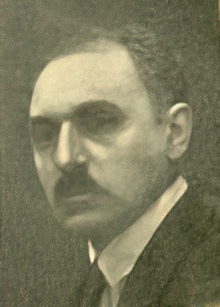1921 – News Highlights
- Ireland gains independence.
- Hitler becomes Führer of the German Nazi Party. Before the end of the year they create a paramilitary wing of the party, the Sturmabteilung (SA).
- Benito Mussolini forms the Italian National Fascist Party.
- The Russian famine of 1921-1922 begins.
- After not ratifying either the Treaty of Versailles or the Treaty of Saint-Germain, the U.S. signs separate U.S.-German and U.S.-Austrian Peace Treaties. Soon, the U.S. also signs a separate U.S.-Hungarian Peace Treaty.
- The first transcontinental US air mail flight is flown from New York to San Francisco.
- Warren G. Harding is inaugurated President of the U.S.
- The Tulsa Race Massacre is one of the worst anti-black riots in U.S. history.
- In New York City, Einstein lectures on his new Theory of Relativity.
- Bessie Coleman becomes the first Black American to get an international pilot’s license, in France.
- Agatha Christie publishes her first novel, “The Mysterious Affair at Styles” featuring detective Hercule Poirot.
- The baseball World Series is broadcast on radio for the first time, NY Yankees beat the NY Giants.
- Pablo Picasso paints Three Musicians.
- Camille Saint-Saëns writes three sonatas, one each for oboe, clarinet and bassoon (Opuses 166, 167, 168), three of his final works. He dies in December.
- Popular Music: “Ain’t We Got Fun?” by Richard A. Whiting, Raymond Egan & Gus Kahn; “Say it With Music” by Irving Berlin; “Second Hand Rose” by Grant Clarke and James F. Hanley.
Like 1920, there are only two quintets written in 1921, this year by Karl Heinrich David and Heinrich Kaspar Schmid. The work by Schmid is the more substantial one.
Karl Heinrich David (1884-1951)
David’s Suite of 1921 was privately published.
Swiss composer Karl Heinrich David (who may have also gone by David-Rohde) was born in St. Gallen, Switzerland on Dec. 30, 1884 and died in Nervi, Italy, on May 17, 1951. He studied with the Cologne Conservatory and later was a composition student in Munich of Ludwig Thuille (whose sextet for piano and winds is loved by many quintets). He also was a conductor and editor and a music critic. He taught at the Basel Conservatory during World War I, and later in Cologne and Berlin. There is also a listing for Kleine Suite für Blasquintett, undated, published by Pizzicato Verlag Helvetia in 2003, which may be a reprinting of this work. And that is all I could find in my research. The only photo in Wikipedia in the public domain was a fuzzy image of his gravestone (which is sad).
David’s works were reportedly popular in Switzerland (according to the Historisches Lexikon der Schweiz HLS website), but rarely heard outside the country. Other works by David of interest to wind players include: a Quartett für Flöte und Streichtrio (1923); 2 Stücke für 2 Klaviere und 9 Bläser (1926); a Concertino für Fagott und Streicher (1941); and a Konzert für Saxophon und Streichorchester (1947). A Swiss musicologist might find research on this quintet and his other wind works interesting.
Schmid, Heinrich Kaspar (1874-1953)
Schmid’s Woodwind Quintet in B-flat Major, Op. 28, was published in 1921.

The actual date the quintet was written is unclear, but possibly 1920, although it could have been as early as 1919 or as late as early 1921. It was published in Mainz by B. Schott Söhne in 1921. The work is in three movements: 1. Allegro; 2. Grazioso amabile; and 3. Moderato – Allegro giusto. The score and parts of the Schott edition are now available for free download from the International Music Score Library Project. A recent recording is included in the Renaissance City Winds’ CD of German Romantic Wind Music.
Heinrich Kaspar Schmid was born September 11, 1874 in Geiselbullach, Germany (near Munich). His father was a school teacher and choir director, and young Heinrich spent several years as a choirboy at Regensburg Cathedral. He moved on to the Munich Akademie der Tonkunst, where one of his teachers was Ludwig Thuille (who Karl Heinrich David, above, also studied with).
After graduation he taught in Athens, Greece, returning to Munich in 1905. Schmid went on to teach at his alma mater in Munich and (after likely military service in World War I) became professor in 1919, when he also became successful as a composer and a performer, making his way through Austria, Scandinavia and Russia. Oddly, none of the online biographies of Schmid state what his primary instrument (or voice) was, but Wikipedia states one of his teachers was (Hans or Hugo) Bußmayer, so likely it was piano. In 1921 he was appointed director of the Karlsruhe Conservatory and in 1924 the Augsburg Music School (now a Conservatory).
Schmid’s composing style emulated his teacher, Ludwig Thuille, and Johannes Brahms, and he doesn’t seem to have explored the modern music developments surrounding the 1920s. His one symphony, in D Minor was written in 1947 when he was in his 70s. After a lengthy period of bad health, he died on August 1, 1953.
The Quintet in B-flat reflects Schmid’s use of Bavarian folk music as an important part of his musical style. None of the melodic material in the quintet is particularly memorable, consisting of short fragments which are tossed back and forth between all the instruments. Thus, a major performing challenge of this work is smoothly balancing the voices so the leading melodic voice is not covered. (The score and parts are marked to identify the important melodic voice throughout, which helps.) The composer has a habit of reducing his simple motives into smaller and smaller units, down to two notes. The ensemble needs to make the most of the dynamic changes and accelerandos and ritenutos, yet keep a playful approach.
The second movement is a quirky German Ländler (sounding a bit like Mahler) whose tune towards the end, again, devolves down to two notes. The major performance problems are keeping it light most of the time, and resisting the urge to make it a faster waltz. The Renaissance City Winds (from Pittsburgh, Pennsylvania) recording (on Centaur), to these ears, perfectly captures the mood of the work (which other recordings do not). Lovers of Romantic-style quintet music may or may not find this quintet to be their cup of tea, but if you try it, plan on working on keeping the music sounding light and flexible.
For 1922, we have separate articles for the quintets of Paul Hindemith and Carl Nielsen as well as several other composers in our general survey of 1922. Things began to get busier and much more interesting for fans of the woodwind quintet.
Credits
The image of Heinrich Kaspar Schmid is in the public domain, from the WikiData website. It was cleaned up using Photoshop for web display.
Copyright © 2024 by Andrew Brandt

